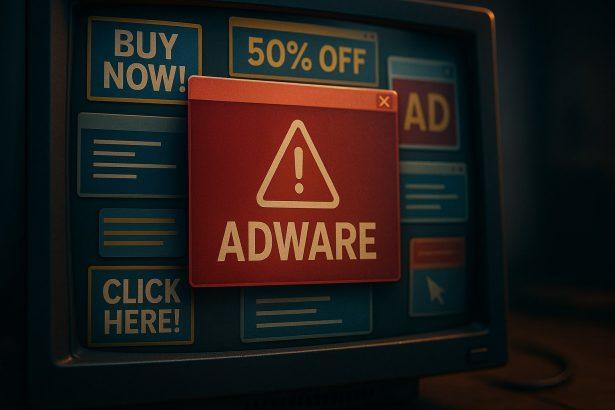Laracismas.co.in is a deceptive website designed to trick users into enabling browser push notifications. Once permission is granted, it bombards users with intrusive ads promoting adult content, fake software updates, and potentially unwanted programs (PUPs). These notifications can lead to security risks, including malware infections and phishing attacks.
Threat Overview
| Threat Type | Adware / Browser Hijacker |
|---|---|
| Associated Domain | laracismas.co.in |
| Detection Names | Not specified |
| Symptoms of Infection | Intrusive pop-up ads, browser redirects, decreased browsing speed |
| Damage | Privacy issues, potential malware infections, decreased system performance |
| Distribution Methods | Deceptive pop-up ads, false claims within websites, unwanted applications (adware) |
| Danger Level | Moderate |
| Removal Tool | SpyHunter |
Detailed Analysis
How Did I Get Infected?
Users typically encounter Laracismas.co.in through:
- Malicious Ads (Malvertising): Clicking on misleading ads, especially from untrustworthy websites, can redirect users to Laracismas.co.in.
- Compromised Websites: Some legitimate websites may be hacked or display third-party ads that redirect users to this deceptive site.
- Adware or Unwanted Browser Extensions: Infections can cause frequent redirects to Laracismas.co.in.
- Fake Download or Play Buttons: Scam websites trick users into clicking fake buttons, leading to unwanted redirects.
- Spam Emails or Messages: Phishing emails or social media messages may contain links redirecting users to Laracismas.co.in.
What Does It Do?
Once permission is granted, Laracismas.co.in sends intrusive notifications promoting:
- Adult websites
- Online web games
- Fake software updates
- Potentially unwanted programs (PUPs)
These notifications can appear even when the browser is closed, leading to continuous disruptions and potential security risks.
Should You Be Worried?
Yes. While Laracismas.co.in is not a virus, it poses significant privacy and security risks. The intrusive ads can lead to malicious websites, phishing attacks, and further malware infections. It’s crucial to revoke the site’s notification permissions and scan your system for adware and other threats.
Manual Adware Removal Process (Windows & Mac)
Step 1: Identify and Uninstall Suspicious Applications
For Windows Users
- Open Task Manager by pressing
Ctrl + Shift + Esc. - Navigate to the “Processes” tab and search for unknown or high-resource-consuming processes.
- If you detect anything suspicious, right-click and select “End Task.”
- Go to
Control Panel>Programs>Programs and Features. - Locate and uninstall any unfamiliar programs.
For Mac Users
- Open
Finderand click onApplications. - Identify and move any suspicious applications to the
Trash. - Empty the
Trash. - Check
System Preferences>Users & Groups>Login Itemsfor unknown startup programs and remove them.
Step 2: Remove Malicious Browser Extensions
Google Chrome
- Open Chrome, click
Menu(three dots) >Extensions. - Locate and remove unknown extensions.
- Reset Chrome:
Settings>Reset settings> “Restore settings to their original defaults.”
Mozilla Firefox
- Click
Menu>Add-ons and themes. - Remove suspicious extensions.
- Reset Firefox:
Help>More troubleshooting information> “Refresh Firefox.”
Safari (Mac)
- Open Safari, go to
Preferences>Extensions. - Delete unknown extensions.
- Reset Safari:
History> “Clear History.”
Microsoft Edge
- Click
Menu>Extensions. - Remove any unfamiliar extensions.
- Reset Edge:
Settings>Reset settings> “Restore settings to their default values.”
Step 3: Delete Adware-Associated Files and Folders
For Windows Users
- Press
Win + R, type%AppData%, and press Enter. - Locate and delete suspicious folders.
- Repeat for
%LocalAppData%,%ProgramData%, and%Temp%.
For Mac Users
- Open Finder and press
Shift + Command + G, then enter~/Library/Application Support/. - Remove any suspicious folders.
- Repeat for
~/Library/LaunchAgents/,~/Library/LaunchDaemons/, and~/Library/Preferences/.
Step 4: Flush DNS Cache to Remove Adware Traces
For Windows Users
- Open
Command Promptas Administrator. - Type
ipconfig /flushdnsand press Enter.
For Mac Users
- Open
Terminal. - Enter
sudo killall -HUP mDNSResponderand press Enter.
Step 5: Restart Your System
Perform a reboot to apply the changes and ensure the removal process is complete.
Automatic Adware Removal Using SpyHunter (Windows & Mac)
For an effortless and effective solution, use SpyHunter, a powerful anti-malware tool designed to detect and remove adware completely.
Step 1: Download SpyHunter
Click the link to download SpyHunter: Download SpyHunter Here.
Step 2: Install SpyHunter
Follow the installation guide based on your operating system:
For Windows Users
- Run the downloaded
.exefile. - Follow the installation instructions.
- Launch SpyHunter and allow it to update its malware database.
For Mac Users
- Open the downloaded
.dmgfile. - Drag and drop SpyHunter into
Applications. - Open SpyHunter and let it update its database.
Step 3: Scan and Remove Adware
- Open SpyHunter.
- Click
Start Scan. - Wait for the scan to complete.
- Click
Fix Threatsto remove detected malware.
Step 4: Restart Your Computer
After SpyHunter removes all threats, restart your system to ensure all adware components are fully removed.
Conclusion
Laracismas.co.in exploits browser notification features to deliver unwanted and potentially harmful ads. By understanding how this threat operates and taking appropriate action, users can protect their systems from further harm. Always be cautious when granting notification permissions and ensure your system is protected with reliable security software.




